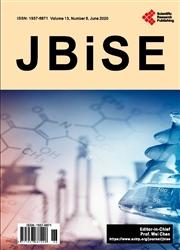Investigations of CT Dose with Contrast Agent and Its Effects on the CTDI
引用次数: 1
Abstract
Purpose: Computed tomography is a leading imaging technique for head & neck and brain and most of these imaging protocols iodine-based contrast media are utilised. The chief aim of this research is to utilize the effects of the contrast media “CM” used in computed tomography “CT” which is used to enhance subject contrast on the delivered CT via its inclusion into the CT dose index “CTDI”, and to introduce a simple method to determine this effect via the available CT numbers at the imaged targets. Method: The CT dose increase is estimated theoretically and measured experimentally and then related to the average CT number in the volume of CM uptake. A factor dependent on CM concentration and beam energy is added to the CTDI equation to represent the increased dose burden. A simple holed Perspex phantom was built to measure the variation of imaged CT number. CT Gafchromic type film was alternately imaged in a reservoir of CM and water. The relative difference in the dose burden as obtained by scanning the two films represents the dose difference and hence the CM dependent increase. Results: Measured dose effects due to the inclusion of the CM varied depending on the concentration. The increase in dose is estimated to be about 17% for 20% contrast media in the target while that for 10% by volume is around 6.6%. These are estimated from the CT numbers. Patients’ data also shows influence of the CM on the CTDI values. Conclusion: The dosimetric effects of the contrast media are included into the CTDI and can be estimated by using the CT numbers obtained.CT造影剂剂量及其对CTDI影响的研究
目的:计算机断层扫描是头颈部和脑部的主要成像技术,大多数成像方案都使用基于碘的造影剂。本研究的主要目的是利用计算机断层扫描“CT”中使用的造影剂“CM”的效果,通过将其纳入CT剂量指数“CTDI”来增强交付CT上的受试者对比度,并介绍一种通过成像目标处可用的CT数来确定这种效果的简单方法。方法:通过理论估计和实验测量CT剂量的增加,并将其与CM摄取体积中CT的平均数目相关联。在CTDI方程中加入一个依赖于CM浓度和光束能量的因子来表示增加的剂量负担。建立一个简单的多孔有机玻璃模体来测量成像CT数的变化。CT变色型胶片在CM和水的储层中交替成像。通过扫描两层膜得到的剂量负担的相对差值表示剂量差,因此CM依赖性增加。结果:CM包埋引起的剂量效应随浓度的变化而变化。造影剂浓度为20%时,剂量增加约为17%,而体积增加10%时,剂量增加约为6.6%。这些是根据CT数据估计的。患者数据也显示CM对CTDI值的影响。结论:造影剂的剂量学效应包括在CTDI中,并可通过获得的CT数来估计。
本文章由计算机程序翻译,如有差异,请以英文原文为准。
求助全文
约1分钟内获得全文
求助全文

 求助内容:
求助内容: 应助结果提醒方式:
应助结果提醒方式:


